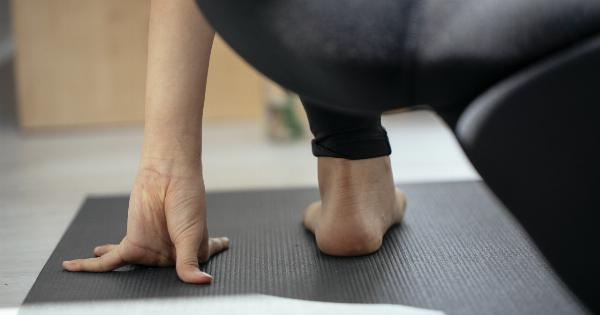Headaches are a common ailment that can range from mild discomfort to debilitating pain. While over-the-counter pain relievers can provide temporary relief, they often come with side effects and may not be suitable for everyone.
Fortunately, there are several natural remedies that can help alleviate headaches without the use of medication. In this article, we will explore ten effective natural remedies for headaches.
1. Drink Plenty of Water
Dehydration is a common trigger for headaches, so it’s important to stay hydrated throughout the day. Drinking at least eight glasses of water daily can help prevent and relieve headaches.
If you’re prone to migraines, consider drinking electrolyte-rich fluids like coconut water to replenish essential minerals.
2. Apply a Cold or Warm Compress
Applying a cold or warm compress to your head or neck can provide instant relief from headaches. For tension headaches, a warm compress can help relax the muscles and reduce pain.
On the other hand, a cold compress can constrict blood vessels and numb the area, making it effective for migraines.
3. Get Adequate Sleep
Lack of sleep or poor sleep quality can contribute to headaches. Establishing a regular sleep schedule and ensuring you get enough sleep (around 7-9 hours for adults) can help reduce the frequency and intensity of headaches.
Creating a relaxing bedtime routine and avoiding electronic devices before sleep can also promote better sleep.
4. Practice Relaxation Techniques
Stress is a major trigger for headaches, so incorporating relaxation techniques into your daily routine can be beneficial.
Deep breathing exercises, meditation, yoga, and progressive muscle relaxation are all effective techniques for reducing stress and relieving headaches.
5. Use Essential Oils
Essential oils have been used for centuries to alleviate various ailments, including headaches. Peppermint oil, lavender oil, and eucalyptus oil are particularly effective for soothing headaches.
Dilute a few drops of the preferred oil with a carrier oil, such as almond or coconut oil, and gently massage it into your temples and forehead.
6. Apply Pressure to Acupressure Points
Acupressure involves applying pressure to specific points on the body to relieve pain and promote healing. There are several acupressure points that can help alleviate headaches.
The one located between the thumb and index finger can be particularly effective. Apply firm pressure to this point and hold for several minutes, repeating on the other hand.
7. Watch Your Diet
Certain foods and drinks can trigger headaches, especially migraines. Keeping a food diary can help you identify potential triggers and avoid them. Common culprits include chocolate, cheese, caffeine, and alcohol.
Instead, incorporate foods rich in magnesium, such as spinach, nuts, and seeds, as magnesium deficiency can contribute to headaches.
8. Stay Active
Regular physical activity promotes blood circulation, reduces stress, and releases endorphins. Engaging in aerobic exercises like walking, cycling, or swimming can help prevent headaches by improving your overall well-being.
However, it’s important to start slowly and gradually increase the intensity to avoid exercise-induced headaches.
9. Use Herbal Remedies
Herbal remedies have been used for centuries to treat headaches and migraines. Feverfew, butterbur, and ginger are some of the most commonly used herbs for headache relief. These herbs can be consumed as capsules or brewed into a tea.
It’s essential to consult a healthcare professional before trying any new herbal remedy.
10. Maintain Good Posture
Poor posture can strain the muscles in your neck and shoulders, leading to tension headaches. Maintaining proper posture throughout the day can help reduce the frequency and severity of headaches.
Ensure that your workstation is ergonomically designed, with your monitor at eye level and your chair providing adequate back support.






















